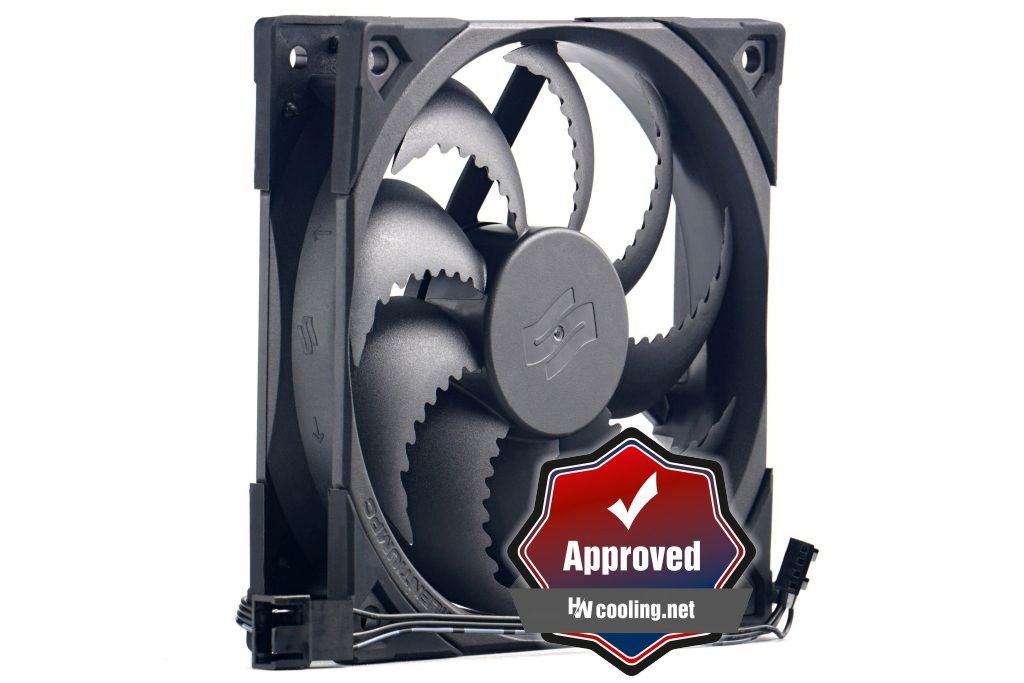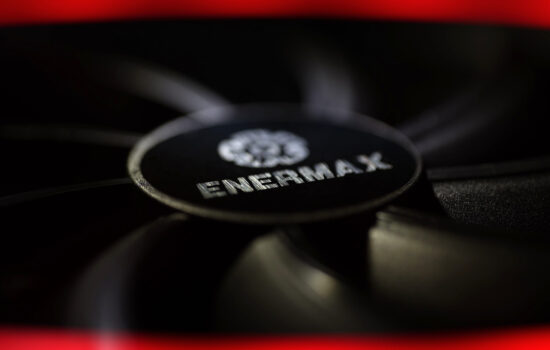Evaluation
SilentiumPC presents the Fluctus 120 PWM as its very best fan. But, to beat the whirring Sigma Pro 120 PWM and the obviously sketchy Sigma Pro Corona RGB 120 is relatively simple. The company’s marketing, however, talks about psychoacoustic optimizations. And while there’s no reason to smirk (psychoacoustics is a legitimate scientific field), there were some imperfections that the Poles didn’t avoid.
Evaluation
Compared to previous SilentiumPC fans, the Fluctus 120 PWM is a big leap. Compared to the Sigma Pro PWM 120, of which the Fluctus is a direct successor, there is a significant difference in price as well. You can’t buy the Fluctus 120 PWM for under 12 euros and you can get the Sigma Pro PWM 120 for 7 euros. But well, even at this price we can state that it is still a still a cheap option.
Relative to its price, the Fluctus is truly a killer of competing models and nipping at the heels of even the significantly more expensive ones. Airflow performance in normalized modes under fixed dBA achieves excellent results across the entire speed spectrum.
Mostly, it’s just below the nearly three times more expensive MSI MEG Silent Gale P12. On a thinner radiator, the Fluctus even beats it when it comes to airflow. In the of static pressure values, the SilentiumPC fan lags a little behind, but it still holds up well. What is remarkable is how the amount of static pressure varies as a function of speed with respect to rotor orientation. The latter does not usually play an important role in a well-sealed system, and the static pressure of the fans is usually similar, and often the same for underpressure and overpressure. With decreasing speed, however, the intensity of the overpressure fades significantly less than that of the underpressure (the higher static pressure of the underpressure is practically only at maximum speed). In addition to system cooling, this makes it a good low-cost choice for radiators. However, we can only recommend this all-purpose fan if you are not sensitive to a more “rumbly” sound.
And here we get to those psychoacoustic optimizations. There have certainly been some. The fact that higher Airflow and Pressure values are achieved in normalized modes based on noise levels than the Sigma Pro PWM 120 confirms the claim that the fan design reduces noise while increasing cooling performance. But there’s one little thing that can make this whole effort disappointing.. Namely, strong rumbling frequencies in the 130-200 Hz range.
SilentiumPC could argue that these frequencies are amplified by the design of our tunnel (but even a computer case is inherently a wind tunnel) and, most importantly, none of the other fans we’ve tested so far have performed at these frequencies this way in such a pronounced way. Peaks at these frequencies are also visible in the SilentiumPC spectrograph, but their relative noise level is supposed to be significantly lower in relation to the other frequencies and they are supposed to be exceeded by the treble around 2.5 kHz, which is quite strange and that’s why we don’t take this graph too much into account.
Rumble frequencies are pronounced even with obstacles, including a nylon dust filter, with which a higher than normal noise level is achieved. The only thing that breaks up these frequencies and shifts the dominant noise intensity to 587 Hz is, paradoxically, the hexagonal grid. The average noise level in dBA is admittedly higher with it, as the noise level increases due to the increase in mechanical resistance, but at more pleasant middle frequencies. Vibrations from turbulence and the motor have been reduced, but on the whole and compared to the competition, their intensity is average. There is definitely room for improvement. Comparably average is the power draw as well and ratios derived from it to airflow, or static pressure per Watt. Still, it must be stressed that this is a 12-euro fan, where “mediocrity” in several aspects is somehow expected. In the main area, cooling efficiency, however, the 120 mm Fluctus is excellent.
For a good while, we considered the “Smart buy!” award, but we’ll save that for next time when the acoustics are fine-tuned. If you don’t mind the dronier frequencies, then feel free to assume it got the award. But for the HWCooling editorial team it is “Approved” for now. Although there is almost nothing substantial for which to fault the SilentiumPC Fluctus 120 PWM fan, you will soon see for yourself that there are alternatives with fewer negatives at this price point.
English translation and edit by Jozef Dudáš
| SilentiumPC Fluctus 120 PWM |
| + Suitable for every use |
| + Great price/cooling performance ratio |
| + Cooling efficiency (Airflow/pressure per unit of noise) at a very high level |
| + Beats even significantly more expensive fans in performance |
| + High airflow and static pressure through an obstacle |
| + Wide speed range |
| + Very low speeds possible (stable from approx. 167 rpm) |
| + Very quiet motor and bearings |
| + Decent build quality |
| + Really powerful engine |
| - The sound is characterized by rumbling frequencies. For some, they may be unpleasant |
| - Harder anti-vibration pads |
| - The manufacturer's specifications are missing key parameters, airflow and static pressure |
| Approximate retail price: 12 EUR |
- Contents
- SilentiumPC Fluctus 120 PWM in detail
- The basis of the methodology, the wind tunnel
- Mounting and vibration measurement
- Initial warm-up and speed recording
- Base 7 equal noise levels…
- .. and sound color (frequency characteristic)
- Static pressure measurement…
- … and airflow
- Everything changes with obstacles
- How we measure power draw and motor power
- Measuring the intensity (and power draw) of lighting
- Results: Speed
- Results: Airflow w/o obstacles
- Results: Airflow through a nylon filter
- Results: Airflow through a plastic filter
- Results: Airflow through a hexagonal grille
- Results: Airflow through a thinner radiator
- Results: Airflow through a thicker radiator
- Results: Static pressure w/o obstacles
- Results: Static pressure through a nylon filter
- Results: Static pressure through a plastic filter
- Results: Static pressure through a hexagonal grille
- Results: Static pressure through a thinner radiátor
- Results: Static pressure through a thicker radiator
- Results: Static pressure, efficiency by orientation
- Reality vs. specifications
- Results: Frequency response of sound w/o obstacles
- Results: Frequency response of sound with a dust filter
- Results: Frequency response of sound with a hexagonal grille
- Results: Frequency response of sound with a radiator
- Results: Vibration, in total (3D vector length)
- Results: Vibration, X-axis
- Results: Vibration, Y-axis
- Results: Vibration, Z-axis
- Results: Power draw (and motor power)
- Results: Cooling performance per watt, airflow
- Results: Cooling performance per watt, static pressure
- Airflow per euro
- Static pressure per euro
- Results: Lighting – LED luminance and power draw
- Results: LED to motor power draw ratio
- Evaluation












